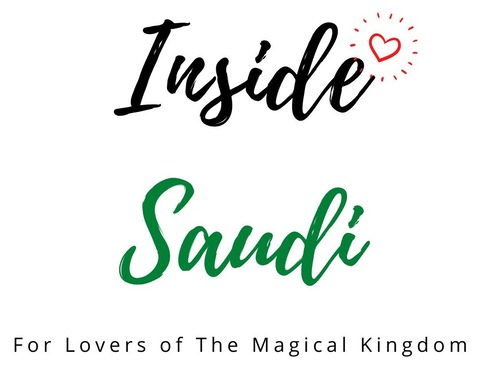After many years of living in Saudi Arabia, few things about it surprise me anymore. However, visitors to the kingdom are often amazed by some Saudi customs and aspects of the culture which might appear ‘different’ from their own.
On seeing them, some people are even appalled and object strongly. Others readily accept the differences and learn to deal with them. After all, they reason that Saudi Arabia is not their country and that each really should be left to his/her own.
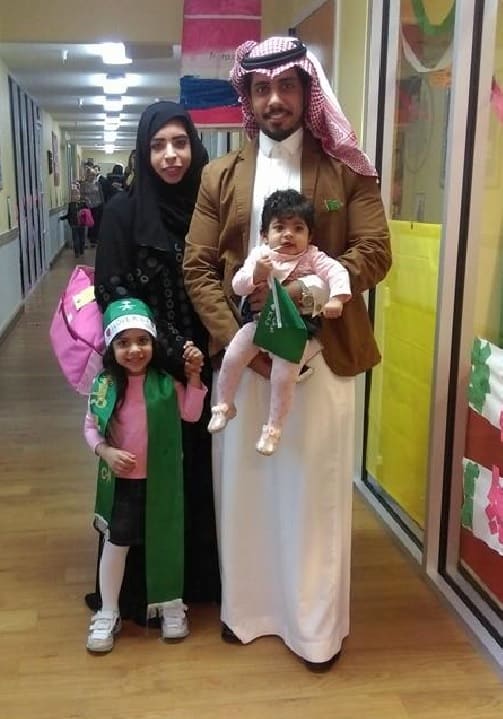
Below is a list of customs and norms in Saudi Arabia that often shock visitors coming to the kingdom that require some mental adjustment and accommodation.
10 Facts I Wish I Had Known Before Going To Saudi Arabia
- It Is Virtually Crime-Free
- Everything Stops For Prayer Time
- Women Dress Completely In Black
- The Blistering Heat
- The Astounding Low Price Of Petrol
- Impossibly Low Taxes
- Men and Women Are Completely Separated
- Men Are Close To Men
- Driving A Car Is Life-Threatening
- The Wonderful Vast Desert
It Is Virtually Crime-Free

It would be silly to claim that Saudi Arabia is totally crime-free. If that were the case, there would be no police, prisons nor a legal system to handle criminal cases. It does exist, but levels of crime are so low so as not to be really obvious.
The biggest crimes are petty thieving, drug selling, and possession with rare acts of terrorism and murder. In daily life, you would not notice crimes when you come to visit the kingdom.
I hardly ever saw examples of street vandalism, wall spray painting, breakages, and destruction of public property in the kingdom. They are by no means angels, but I have often wondered why the youth are so well behaved.
Statistics show that crimes range between only .10 and .50 out of every 100,000 people. (MFS) This is due of course to the implementation of Sharia Law and strict punishments are imposed for crimes that are deemed both immoral and illegal.
The Streets Are Very Safe

People can walk the street freely in Saudi Arabia. It is very safe. Children can play together outside with very little worry. Many residents report how they can keep their doors open at night without the fear of getting robbed.
Women and small children can even be outside late at night and not experience any problems. This is true for cities but especially true in more rural locations.
Since selling or buying alcohol is completely prohibited, you will not see bars, nightclubs, late-night partying, no drunk people and no drink driving.
Boyfriend/girlfriend relationships are prohibited by law together with homosexuality. So you will never see open displays of sexuality and casual sexual relationships. All intimate relations are conducted in marriage.
It is likely that sexual predators exist, but due to the certainty of severe punishment, people are not concerned in a sexual way for the safety of wives, children even male family members.
I have never witnessed instances of eve-teasing or sexual harassment, no wolf-whistling, haranguing, molestations, rapes, though, at various times, I have seen physical altercations.
I am sure that the chances of becoming a victim of crime are very low indeed.
The rate of theft is very low. During prayer times, street market vendors can leave their stuff outside unguarded and it does not get stolen. You can forget and leave items in public places and later return to find them still there.
Women Are Very Safe
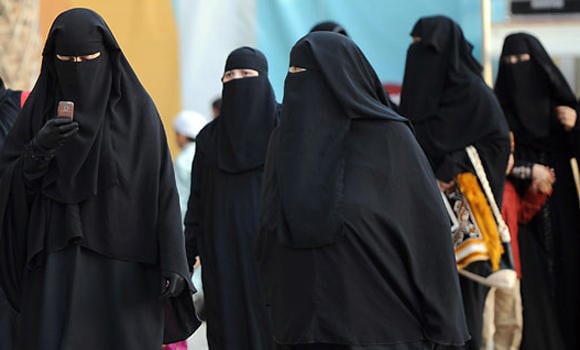
In spite of a lack of certain freedoms, women really appreciate how much safety exists for them as they go about their daily lives. Not only are women safe from sexual molestations but they receive the greatest of respect and preferential treatment in Malls, shops, and supermarkets.
For example, in banks and supermarkets, women can jump the line. Some outlets even provide women-only queues to speed up the shopping process.
Saudis Love Children
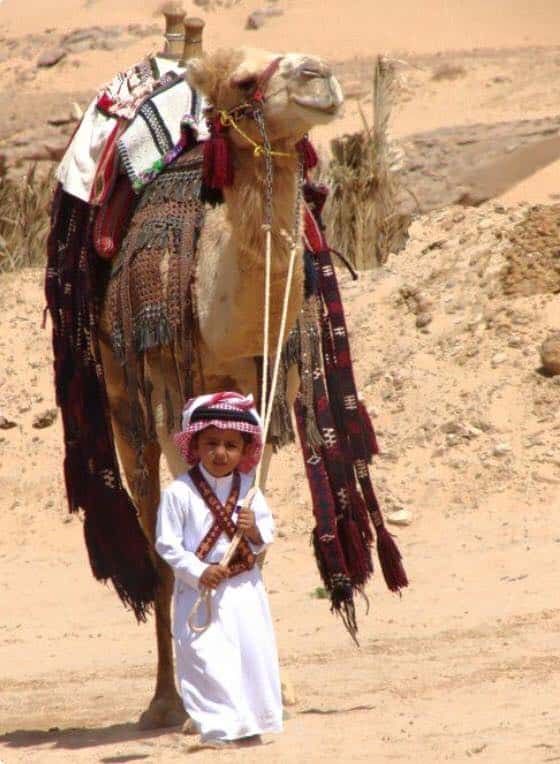
On the whole, Saudis and Muslims love children. Unlike in the West, there is greater tolerance for them in public. Local councils and companies provide lots of entertainment and activities for kids especially in the Malls at the weekends.
Saudi and Muslims are very family orientated and the population of youth and children is well over 50%. You see young people everywhere.
Online access to political or pornographic content is strictly controlled through government internet censorship. There is little polemic debate on social media and viewing content is monitored.
If you do visit the kingdom, it would also be very wise to steer well clear of arguments and debates about the ruling family, politics or Saudi cultural life.
Everything Stops For Prayer Time
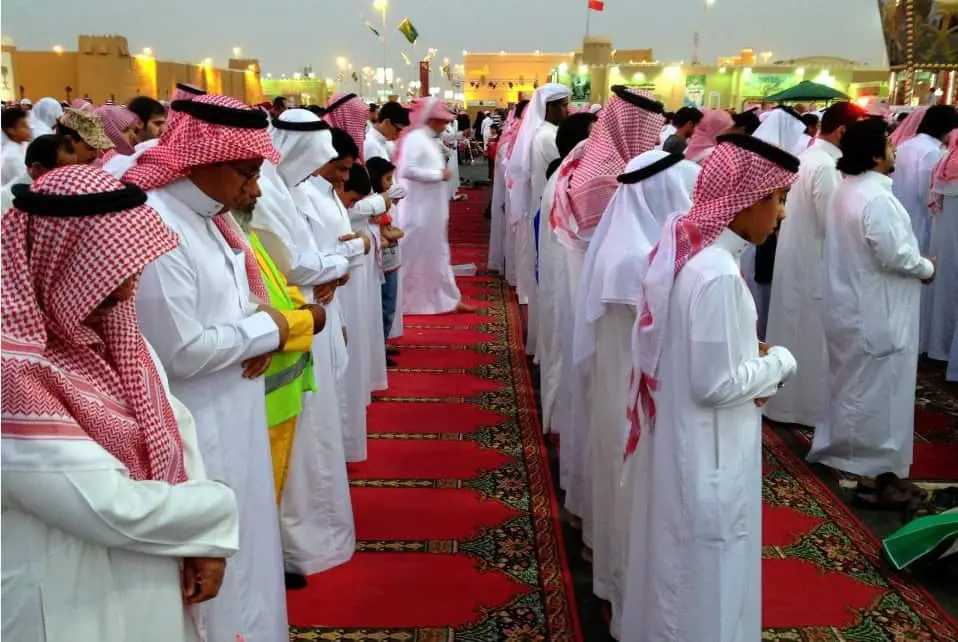
Five times a day, Saudi Arabia literally stops during prayer times. Malls, shops, restaurants, and normal government services close for about 30 minutes for each of the prayer sessions.
If you are in a supermarket or a restaurant during prayer time, you will not be thrown out. Rather they will lock all doors and allow you to finish shopping or to eat up your meal and then take your money after the prayer has finished.
This is strange for everyone when first arriving in the kingdom, but with time people learn to work their schedules around the times of the five daily prayers.
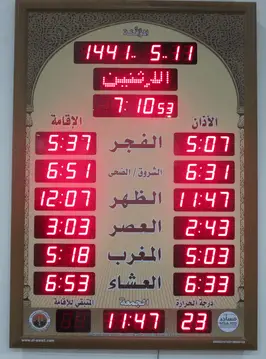
Exact Time For Iama Al Salat- Standing For Prayers -Left
At prayer times, you will see shop workers, employees and residents make their way to perform the ritual ablution called ‘wudhu’ which involves cleaning hands, head, mouth, and feet before heading off to the nearest mosque for prayers.
Anywhere you go in the kingdom, you are never far from a mosque. They are nearly on every street corner. Each town will have one or two central mosques and lots of other smaller ones that exist in the residential areas.
They all offer 5 daily prayer sessions at 5 am, 12 pm, 3 pm, 6 pm, and 8 pm. The larger, main mosques also host the Friday communal prayer (Salaat Al Jumaah) to which all male Muslims above the age of 11 are expected to attend.
Women are not obliged to offer prayers in the mosques, but there is an expectation that men attend the mosque for each of the five daily prayers wherever this is practically possible.
There is no punishment for failing to do so. Also, many workplaces have special prayer areas that workers can use.
In former years, individuals together with the police known as the Committee for the Promotion of Virtue and the Prevention of Vice, also referred to as mutawa were very active in public areas to ensure mosque attendance and to establish ethical behavior.
Today, they no longer exist and people no longer feel pressure to perform their religious duties or act and conform to certain behavioral standards.
Even in spite of the absence of the mutawa, attendance in mosques has not really fallen. People want to pray and do it with or without pressure.
Note: There are absolutely no expectations whatsoever regarding non-Muslims in relation to attending the mosques.
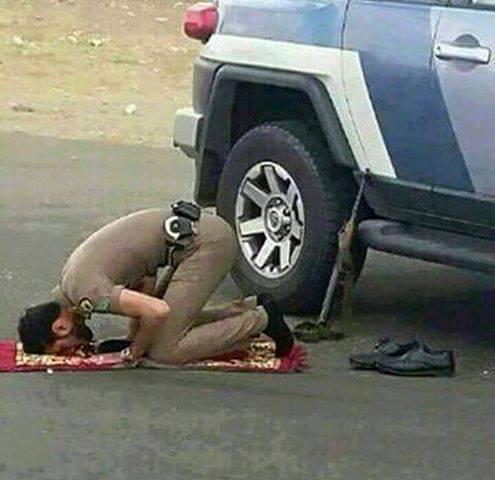
Not attending will NOT prejudice you in the least. However, Muslims would welcome you wholeheartedly to visit a mosque to witness one of the prayers and to ask questions regarding Islam, etc. (MFS)
The mosques are great. They are large, very clean and they feel home from home. They are covered by soft plush wall-to-wall carpets, feel very comfortable and no expense is spared on the decoration, AC, and maintenance.
Memorizing the Holy Quran
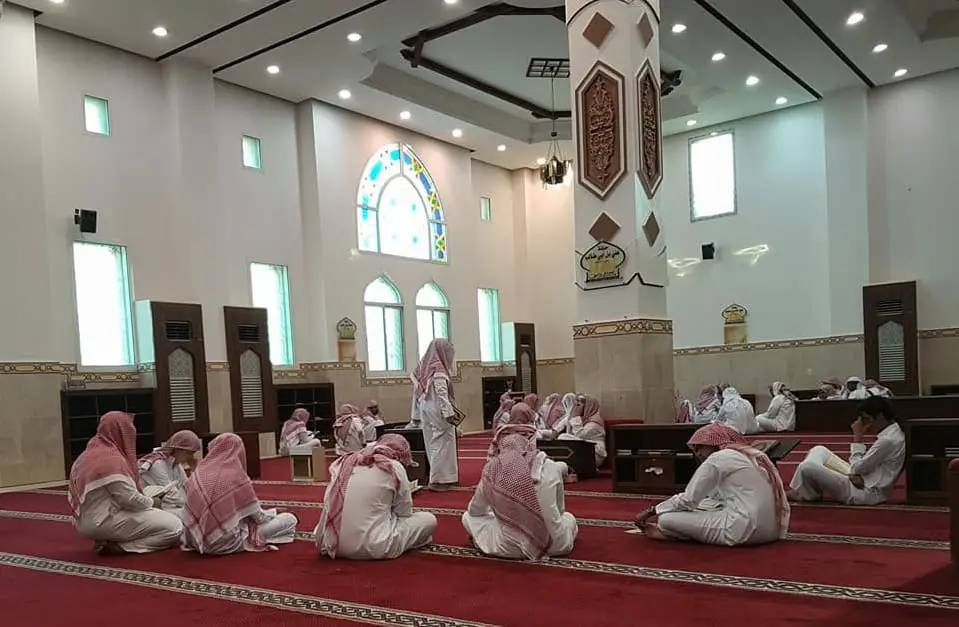
Many mosques offer Quranic memorization classes for free to adults and children especially. There are also annual Quran memorization competitions that give valuable prizes usually a lump sum of money.
The local prayer callers who are known as the Muaazzin sit in the mosque each evening between 6-8 pm to tutor young people in the memorization of the Quran.
Children take it in turns to read verses from the holy book for the Muaazzin. He sits and listens and corrects their pronunciation and encourages them to learn as much as possible of the Quran as they can.
Many people, including children, have memorized all or huge parts of the Quran. Someone who succeeds memorizing and reciting all the Quran from memory is called Hafiz.
Friday Communal Prayer
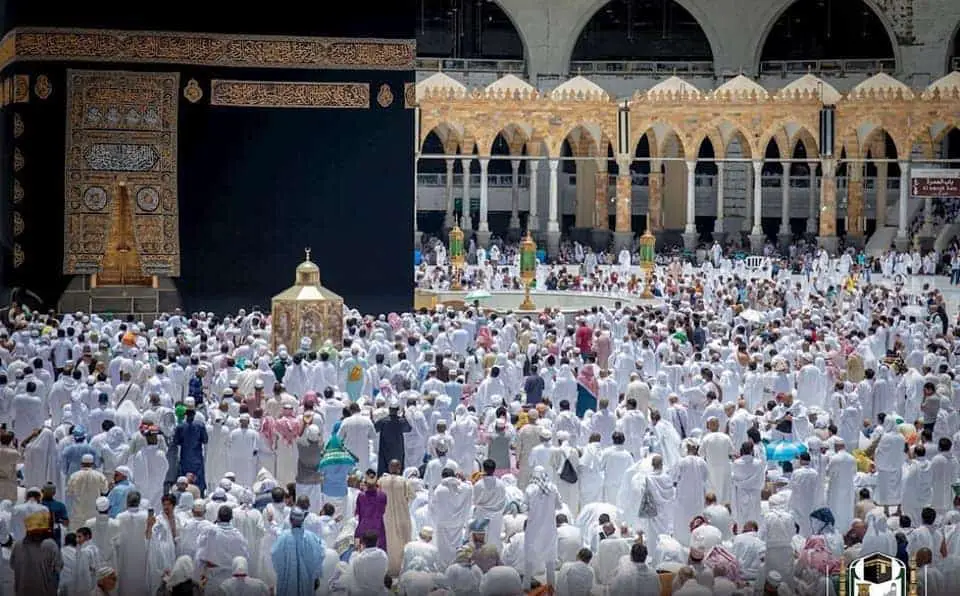
Friday is not a workday in Saudi Arabia. It is a public holiday. The morning is left free for the male Muslim population to attend the Friday communal prayer or the (Salat Al Jummah). Usually, the mosques that can accommodate large numbers of people offer the Friday prayers.
It begins with a long sermon called a Khutba, given by the local ‘shaikh‘ or priest lasting about 20-40 minutes which is usually about some aspect of Islamic religious practice.
It also gives advice and encourages listeners on how to be better Muslims. It ends in congregational prayers that last about 10 minutes, after which the congregation departs.
After the Friday prayer, you can usually see people from the various nationalities meeting outside the mosque. They stand, chat, make friends and catch up on the events of the week. It is great to see it.
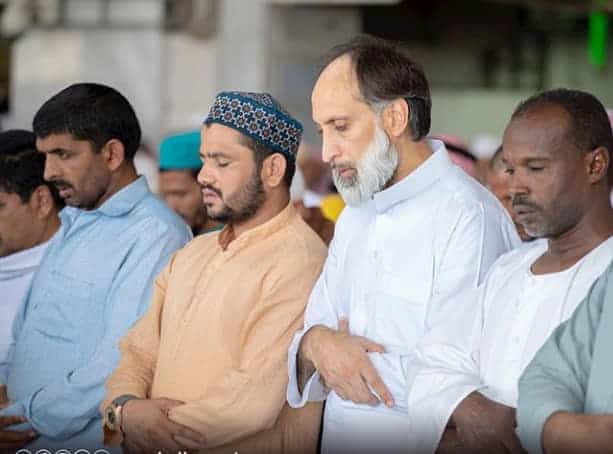
Prayer time is a fundamental Islamic observance which clearly distinguishes believers from non-believers. For Muslims, it is honey to the soul and soothing to the heart.
It brings you closer to the Almighty Allah and causes you to become peaceful and quiet.
The practice of Islam encourages friendships between Muslims, helps to quickly build trust, love, and acceptance of other Muslims as brothers and believers.
Muslims commonly address each other as ‘brother’ in a courteous and respectful way.
Women Dress Completely in Black
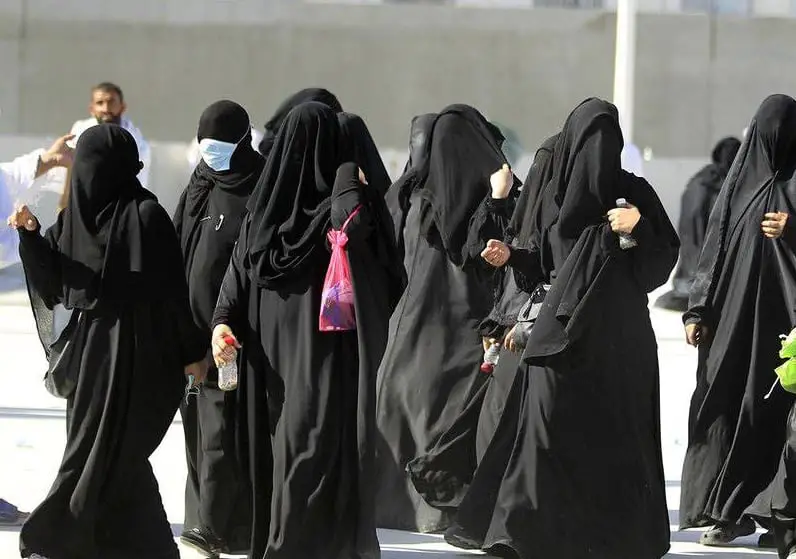
Visitors to Saudi Arabia feel very uneasy when they see how women in the kingdom dress. It is usually in a long black dress (Abaya), a head cover (Hijab) and often a face veil (Niqab).
In the West and many other countries, this attire is very controversial and in very secular nations, it is even banned. It seems that some people feel uncomfortable not being able to see the bodies of women, especially their faces.
However, what you resist persists. In spite of all their efforts, more and more Muslim women both in the East and the West choose to dress this way.
And, even though the Saudi ‘mutawa‘ are no longer permitted to tell women what to wear and how to dress, today 99.9% of women in Saudi Arabia still dress in this way.
You rarely see a woman/girl with the face uncovered. If they do not, they are likely to be non-Saudis, perhaps an Arab from Egypt or the Sham.
Covering from head to toe including the face is the norm in Saudi Arabia.
Why Women Dress in Black
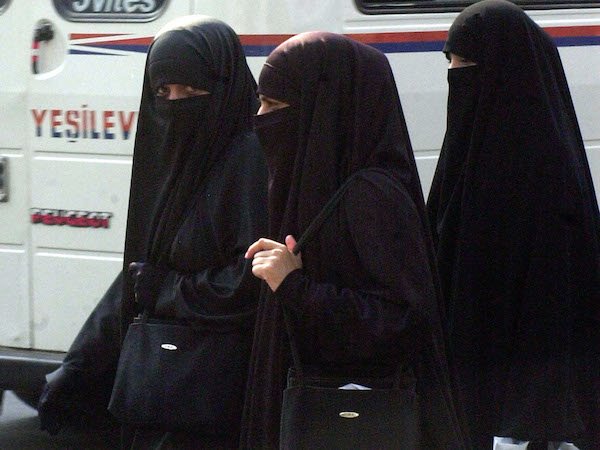
It is a beautiful thing. Islam has graced and blessed her to be covered in this way. Under this black covering, she is free of unwanted male gazing and sexual attention. She can freely go about her day without feeling harassed, eve teased, slapped, whistled at or molested.
As a result, men do not ignore women but rather that the black clothes she dresses in remind men that this woman is a Muslim sister and that she deserves respect in the same way as a man or a young boy would respect his own biological sister or mother.
Women’s black attire has the effect of commanding respect and decent (non-flirtatious) social interactions when communication is required such as in stores, offices and at work, etc.
In Saudi Arabia, when you respect women, you indirectly respect her family too since of course, she is someone’s daughter, mother sister auntie and the like.
Also, out of respect for herself, her religion and the family, women behave appropriately.
Some Misconceptions
Also, you might mistakenly think that women are uneducated, oppressed and forced into submissiveness. Whilst this might be true of some, a number of women I have known or heard about can be strong, loud, assertive and very well educated indeed more even than men.
If you do not believe me, go to any shop or market place and watch how they haggle for the best prices. They can be unrelenting!
Shop Bought Designer Clothes
Also, below the black clothing women wear the most beautiful fashionable clothes that money can buy. Malls and shopping centers are full of international designer brand clothing shops where Saudi ladies love to frequent.
Women do get hot wearing black, but not overheated. The Abaya material is usually very light, fine Japanese or Korean polyester that drapes rather than hugging the body.
The headcover, (Hijab) is a light square shaped cloth draped over the head meant to cover the hair and the veil (Niqab) is one square piece that is tied around the head and hangs from just below the eyes down to the chest area. (MFS)
The Blistering Heat
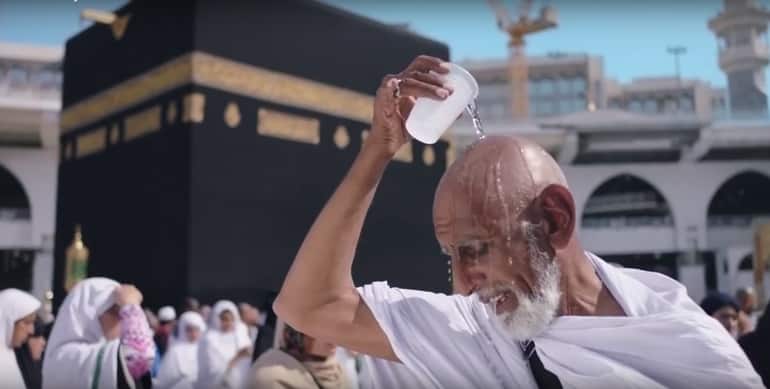
People say that the desert climate has only two seasons; summer and winter. There is no autumn and no spring. The weather is either steaming hot in the summer months (May to Oct) or cold and wet in the winter (Nov-April).
Of course, there are cool rainy periods just before and after the summer, but in the desert both do not feel much like spring or autumn as people might know it in northern climes.
A visit to Saudi Arabia is best in the colder, wetter months, (Nov-April). There is not a lot you can do in the summer months except to take refuge from the searing summer heat.
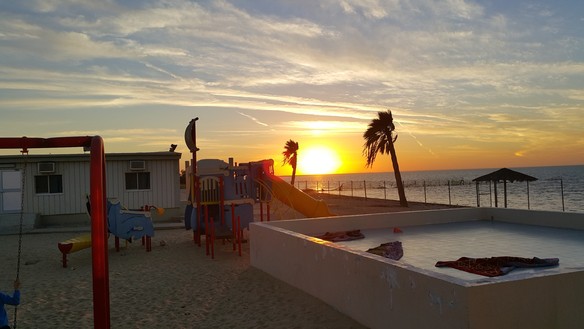
In this season, most people stay indoors during the day and in the evening head for the shopping centers, cafes, restaurants, and Malls.
People head for the seaside beach camps or the desert. At the weekends especially, local beaches are packed with walkers, picnickers and many people go out to socialize and enjoy the fresh sea breeze.
November to April are the outdoor months. The temperatures are a balmy 20 degrees C and the winds are cool and refreshing.
It is also a time when you start to receive invitations to desert camps. At the camps, you can ride camels, have fun on sand buggies, eat traditional Saudi food, drink Arabic coffee, tea and of an evening warm yourself around a toasty campfire.
Advice for Summer Visits
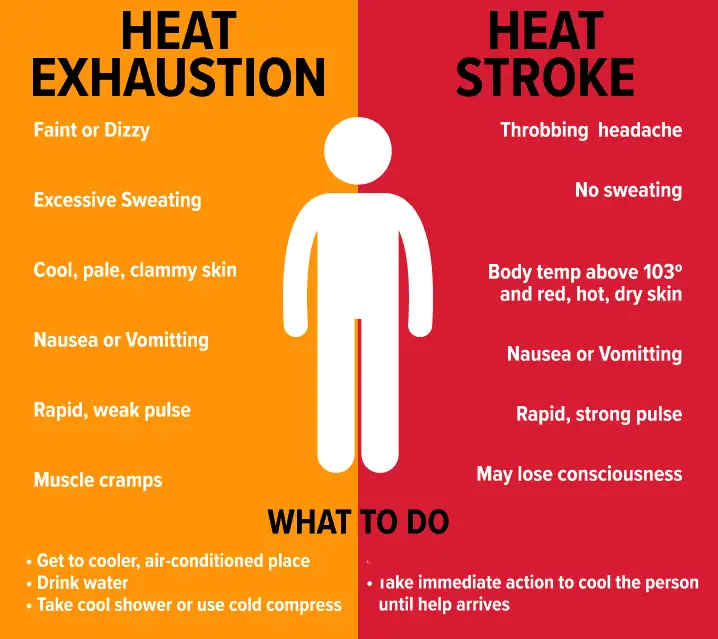
If you must come to Saudi Arabia in summer prepare yourself for intense heat 40-50°C. I compare the Saudi summers to the experience of opening an oven and taking out a roasted chicken.
When you open the door, a wall of heat hits you in the face. The heat is so intense that you step back to avoid it and you quickly close the oven door.
Saudi summers are the same. Step out of the air-conditioned environment onto the street and the intense heat strikes you hard. The difference is that in Saudi you cannot close the door to stop it.
Very quickly you will begin to get hot, then sweat profusely. If you stay directly under the sun for long, your face will start to burn and turn red.
If you must go out into the midday sun, take a white parasol with you or wear a wide-brimmed hat, with light, loose clothing and screen your face with sunblock protection cream. (MFS)
For obvious reasons, you should also take plenty of cool, bottled water with you and drink from it constantly to replace the water you will lose in sweating throughout the day.
This is especially important when you are stuck in a city traffic jam. They are hot, dusty affairs. People get impatient, and during rush hours, waiting times are agonizing.
You do not want to be caught in traffic jams without a good supply of water. If you have a car keep an insulated container for storing and keeping cold water.
If you intend to walk around, beforehand buy a pot of vaseline for heat rub especially for the interior parts of the body that meet clothing, for example between the upper thighs and around the groin area.
There is nothing more painful than walking about the place with thigh rash. It is excruciating, I know from personal experience.
Out and About In The Sun
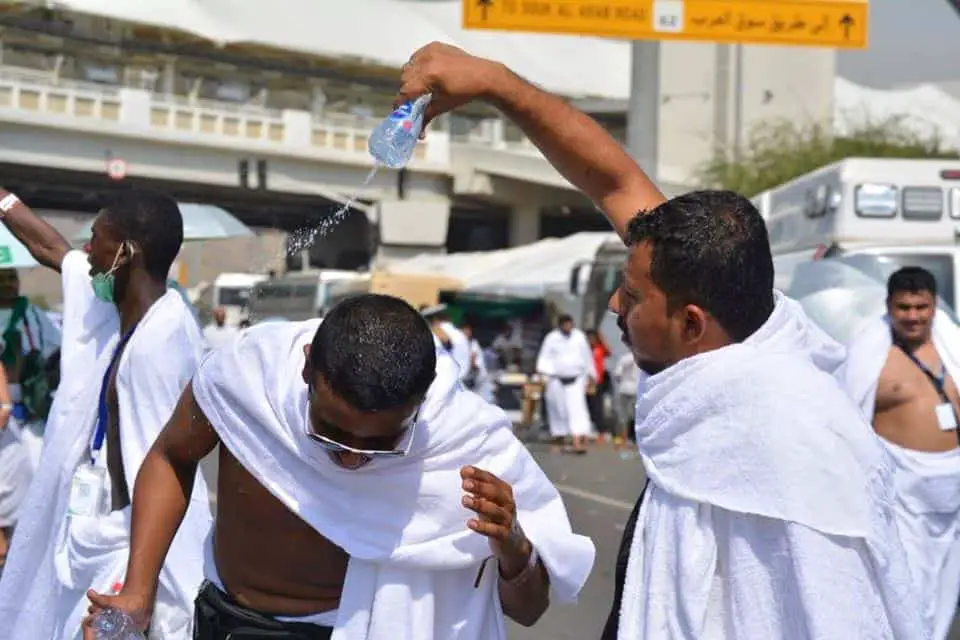
If possible avoid starting to travel at midday when the sun is at its hottest. If I travel long distances, I will set out very early in the morning at 3-4 am, drive until 11 am and then rest in a hotel until 4 pm.
After 5 pm, the sun is lower in the sky and the heat less intense. The early evening is the best time to continue on your journey.
It is also good practice to travel with friends in two or more cars. Make sure your spare wheel is in good condition and that you have plenty of water and supplies.
Keep your mobile with plenty of charge and lots of talk time in case of breakdowns or delays. Have a basic first aid kit with you in the car if you are driving, remember to take lots of breaks. You are not a robot.
Why Car Accidents Occur
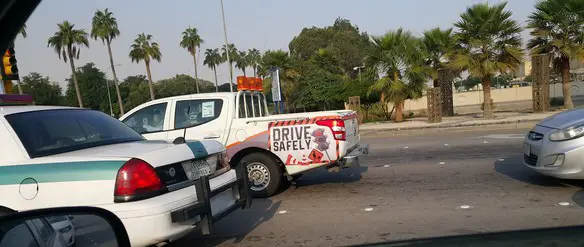
The worst time for crashes is around Magrib time when the sun is setting. It is rush hour and drivers get blinded by the light of the sun which is low in the sky.
They are unable to properly see the road. For this, buy good sunglasses or at the very least use good driver sunscreens and for goodness sake keep your distance behind other vehicles.
For child passengers and people in the back of the car, you can buy window shades. Without them, the sun will burn their arms and faces as you drive and the experience will be a very uncomfortable one indeed. (MFS)
Taxi drivers and truckers wear small towels on their arms, hands, and necks.
The Astounding Price of Petrol
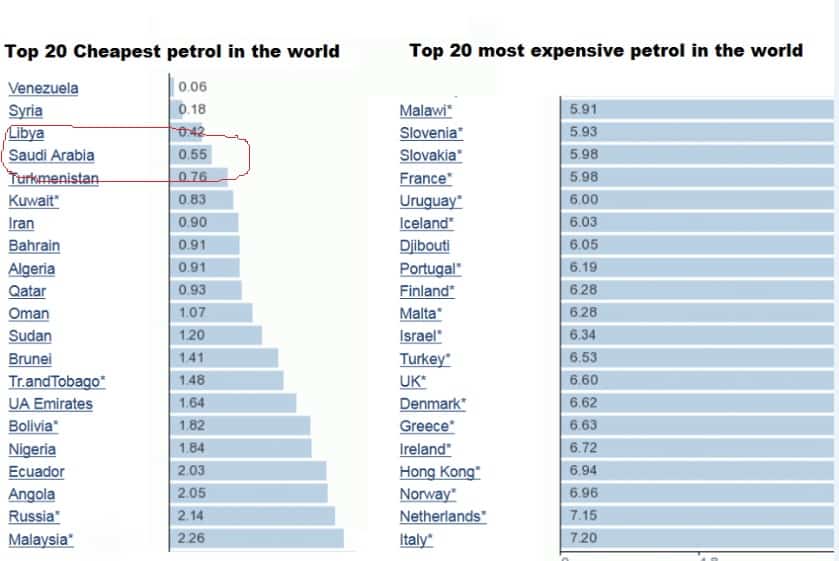
Even in spite of the increases of recent years, the price of petrol is still ridiculously low. During my first few years of living in the kingdom, I was jumping for joy.
Every time, I filled my tank up with gas, I would calculate how much money I had saved compared to the price I would have paid in the UK. And, it was a lot.
Consider too that cars are much bigger, roads are faster and distance much greater. For many years gas prices were minimal costing $.10, or one-tenth of a dollar ( a dime) per liter.
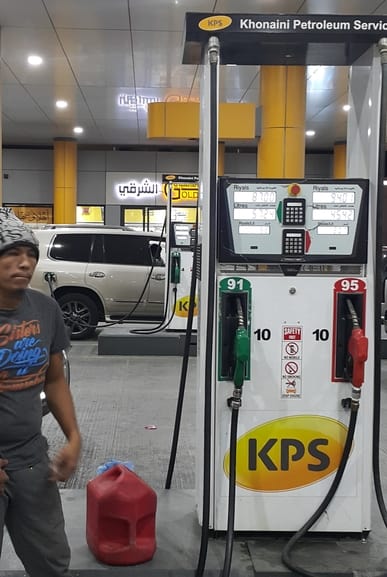
However, in 2017, petrol prices at the pump jumped from .35 halal to 1.5 SR per liter which is $.40 equalling almost half a dollar (50 cents) per liter.
For many years I used to do a weekly fill of my Ford Crown Victoria for about 25 SR which with normal usage cost me about $6.6, per week.
I was so happy! (MFS)
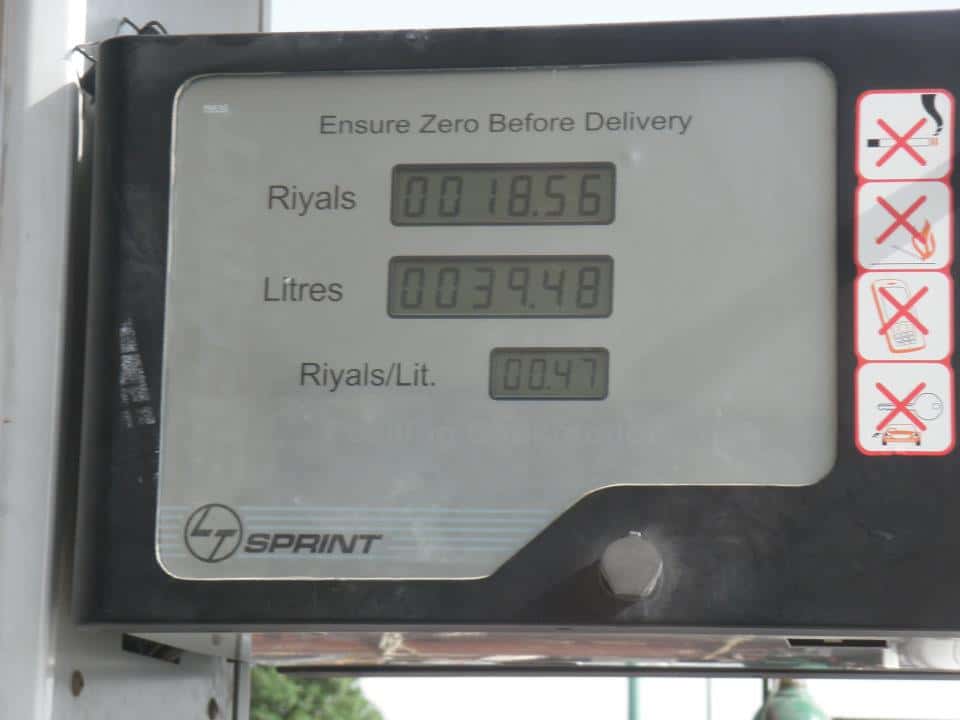
Today though, I can fill my tank for about 50-70 SR, which is an outrageous amount of $16 per week. Though I pay much more today, comparatively it is still an amazingly low amount to fork out on car fuel.
Impossibly Low Taxes And Shop Prices
For many years, massive income from oil revenues meant that there was always a lot of cash to go round. No one needed to pay income tax because sales of state-owned oil adequately met budget needs.
Even until today, there have been no compulsory government taxes. Salaries are still tax-free, thankfully. Cars are not taxed nor is housing. Many local and imported goods are tax-free except for 5% VAT.
However, with falling oil prices and increased public overspending, national budget expenditures began to exceed income. The deficit had to be made up of some form of taxation.
The government responded by Saudizing jobs, kicking out expats and in 2018 imposing a new 5% VAT, the first kind of taxation to be levied in the country.

Today, VAT of 5% is charged on all goods and services. This coincided with an increase in the price of food and goods. In ten years, prices in shops have increased by 20% and up to 150% in some cases.
Low Shop Prices
Also, foodstuffs that were once subsidized, like rice, sugar, etc no longer are. However, due Saudization and to the mass exodus of expatriate workers and their families, supermarkets chains now compete for customers by offering huge discounts for purchases of the larger quantity of items such as tuna, beans, pasta, cream, sweet corn, and other similar dried/canned products.
Thankfully, even in spite of VAT, you can still buy many electronic items for much less than in highly taxed European and Western nations.
For example, today a new smartphone in Saudi Arabia is still 30%-40% cheaper than in the UK due in great part to much lower VAT charges.
Men and Women Are Completely Separated
Other than in the family, children over the age of 11 are completely separated. Men stay with men and women stay with other women. This is Islam and this, even in the so-called liberated 2000s, is still the Saudi/Muslim custom.
Invitations To Saudi Homes
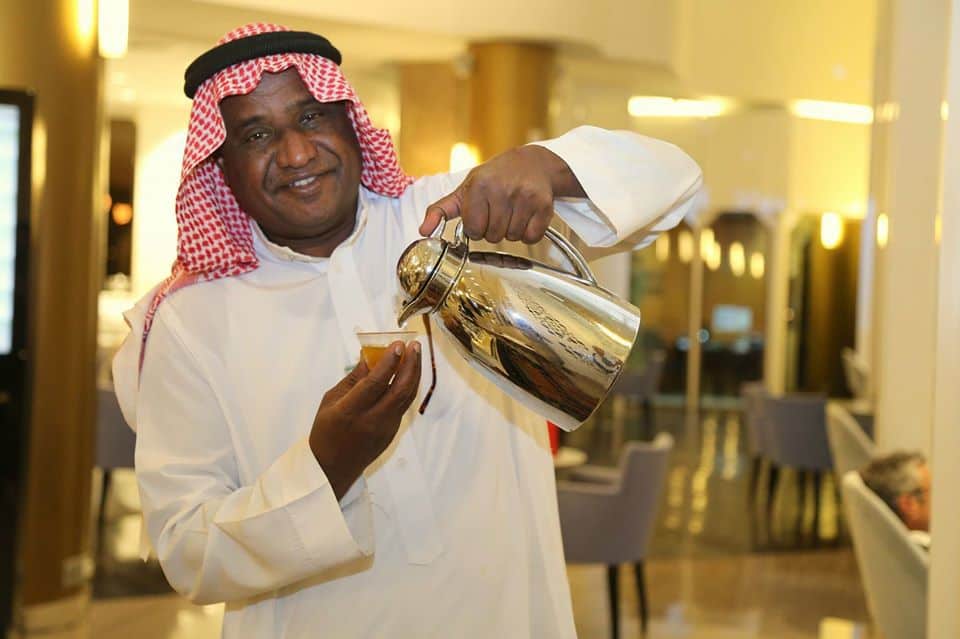
When you are invited to a Saudi home, you will almost never see someone of the opposite sex. You will sit in a room with men only and if it is your wife or big daughters, they sit in rooms designed for the use of women-only with other women and friends,
Any food, drinks, and snacks, etc will be prepared by women inside the house, but it is always served to you by the eldest boy child or for women by the eldest girl child in the ‘majlis’ or sitting areas. (MFS)
Single-Sex Public Spaces
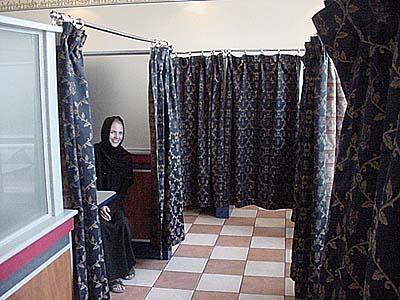
Saudi schools and colleges are single-sex, most restaurants have bachelor only and families eating areas. Banks and public offices have separate entrances and areas for only men women only.
At work, there are spaces reserved for men only and spaces reserved for women only.
Women are almost never to be seen. The only place I have seen large numbers of women are in Malls, shopping centers and during public events.
Even in these places, you do not really see them, because they are covered completely in black clothing and casual relations with them are not permitted.
At first, I found these arrangements very strange. Coming from the West, I was used to having free access to women and having (by Western standards) normal relations.
However, in the Majlis, I love the fuss and courtesy extended to me as a male guest, being served beautiful food, drinks and constantly plied with delicious Arabic coffee. But, it always seemed odd to me that women were never on the scene.
Reasons For The Separation of Men and Women
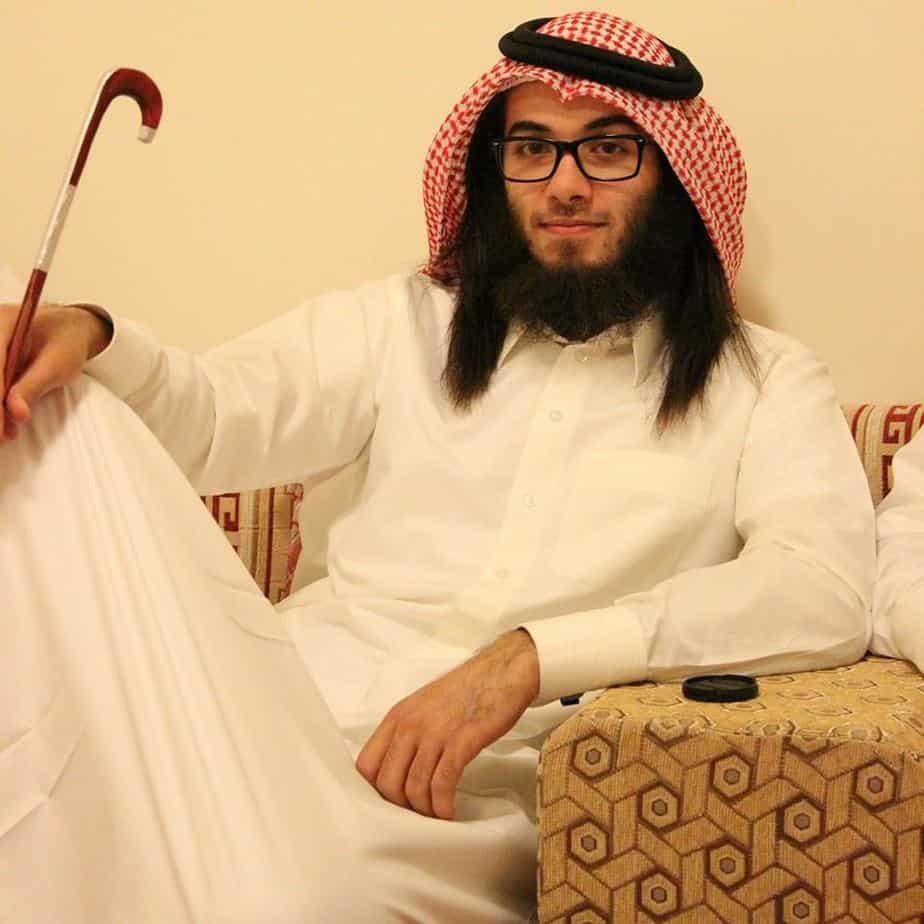
Over the years, I have really come to appreciate the reasons why men and women generally do not mix. I work in an exclusively male college. There are no female students.
The Saudi students I teach are accustomed to this arrangement since from the age of 6 they have been attending single-sex schools. It is nothing unusual. Single-sex classrooms in Saudi Arabia are the norm.
Dangers Of Mixed Environments

Mixed work environments are a potential minefield of problems where men and women meet, fantasize, fall in/out of love, where infidelities begin, pregnancies and marriages end and families get destroyed.
In Saudia Arabia, the chances of that happening are very low indeed because you eliminate the cause. You omit the very sparks that potentially could ignite the fires of passion that blind men and women to act in the interest of their families and their ethical selves.
Single-Sex- The Benefits
It is liberating and refreshing not to have to deal with women in the workplace. In a single sex work environment, there is no flirtation, no sex or mind games, no falling in/out of love, no possibility of infidelity nor sexual discrimination.
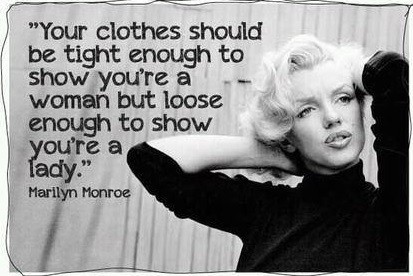
In a single-sex environment, wives can feel secure in the fact there are no female distractions for her husband and men for women, too.
Also, in such environments, men and women are free to be themselves minus the added pressure of having to match the expectations of the opposite sex.
It frees men of their constant emotional dependency on women and frees women of her propensity for attention-seeking.
It creates a much more enjoyable social experience, brings men close to men and by eliminating sexual tension produces calmer, much more peaceful adult males. (MFS)
Lifting Social Restrictions on Women
However, in terms of personal freedoms, Saudi Arabia has eased up on a few very long-standing social restrictions on women. The most well known is that women are now allowed to drive vehicles. They are no longer obligated to wear the veil, but 99.9% still do.
As from August 2019, laws for women changed in that now they :
- No longer need permission from a male guardian to travel, study or work
- Can apply for passports (aged 21 or over)
- Can register births, marriage & divorces
- Can be issued family documents (ID Cards, Make School Applications etc.)
- Can become a legal guardian
- Have a right to employment with no discrimination or bias
However, women still need permission to:
- Marry
- Live Alone
- Give their Citizenship to their children
- Provide consent to marry their children
- Give their own consent to marry
- Leave a domestic abuse shelter
- Leave prison
Today, there is much greater equality. Two years ago, I hardly saw Saudi women in the workplace. Today, you can see them everywhere, especially in retail and the service industries.
This is due in the main to the realization of the 2016 plan by Crown Prince Mohammed bin Salman to transform the Saudi economy in the Vision 2030 and to increase women in the workforce from 22% to 30%.
Men Are Close To Men

Saudi Arabia is definitely a man’s world. But, men know there would be no such world without women. In the absence of females in social life, males relate to each other with greater affection, tenderness, support, and closeness, but without the fear of homosexuality.
In the West, male friendships take much longer to develop and closeness and intimacy are rarely achieved.
Men are not just divided from themselves, but today they take second place to women and their feelings, wants and vulnerabilities are often ignored and disregarded.
In the Arab world, on the other hand, men are much closer and male friendships are easy to develop. There is greater affection and sharing.
Men Holding Hands Are Not Gay
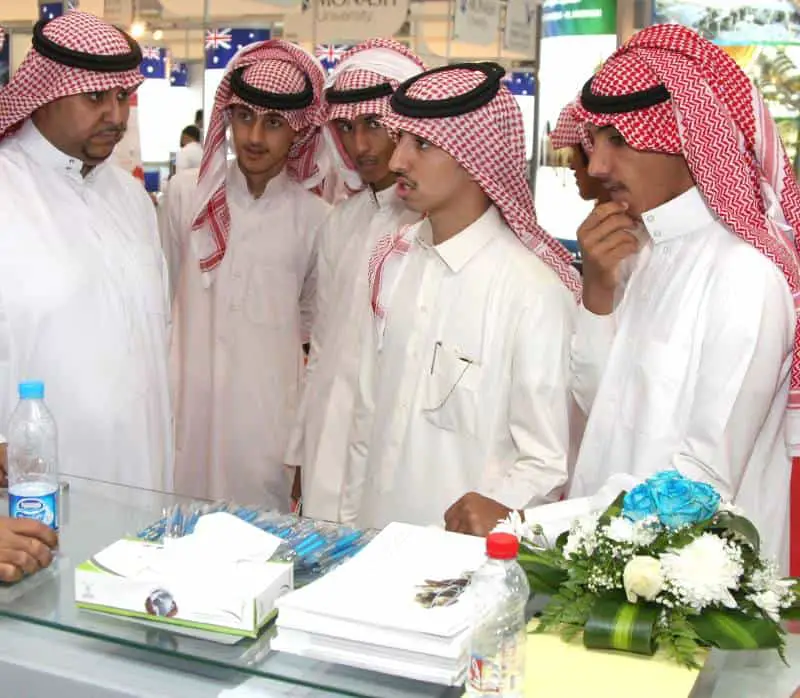
You will often see male friends walking hand in hand. This is not understood in any homosexual way. In Saudi Arabia a man can say to another man, ‘I love you’ and it is understood as words of endearment, love, and respect.
Many of my students have said that they love and respect me as a teacher. They show this by holding and kissing my head. It was something very strange at first that by now I have come to accept and really appreciate it when it happens.
When Saudi/Muslim men meet they first say ‘Salam Allekum’ meaning ‘Allah’s Peace on You’. The other repeats ‘Wah Ley Kum Salam Wah Rahmatullah’ which means ‘And Allah’s Peace and Blessings on You’.
This is common courtesy you will hear very often as you walk down the street. Perfect strangers greet you in this way as they pass you by in the street. It is a good idea to learn how to reply. If you are non-Muslim and you use this expression, Muslims will feel delighted and really appreciate you.
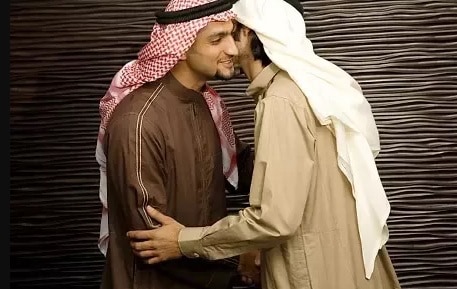
After saying Salam Allekum, Saudi/Muslim men greet warmly by shaking hands and then kiss each other twice on each cheek. Another friendly greeting when men meet is to touch noses. This is called ‘Khishm’. They do it two or three times, even up to six times more in other Gulf countries. (MFS)
The greetings are followed by what seems like a thousand questions asking after your health, your children, your job, your life and everything else in a show of affection and concern.
It is kind of comical to watch, but the intention behind this behavior is positive and endearing.
Warning!
Note: Do not ask a Saudi about his wife or older daughters unless you have great confidence with him. Saudi/Muslim men generally do not discuss their wives except in very formal terms. This is out of respect and what is known as ‘Gheera’ translated as proud jealousy for the honor of his family.
Under any circumstances, do not ever try to shake hands or touch wives and older daughters. This is completely taboo and is very likely to greatly offend your Saudi host.
Driving A Car is Life-Threatening
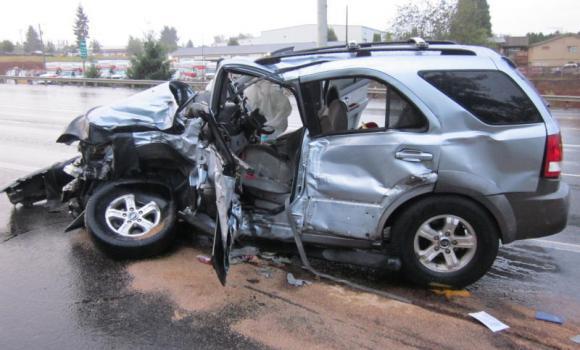
The standard of driving in the kingdom is shocking and there are many accidents, deaths, and injuries each year.
There are about 20,000 driving accidents, annually. This translates to one accident every minute and about 20 deaths per day together with an untold number of injuries.
However, the new ‘Saher’ cameras that were installed slowly during the last few years on highways and city roads together have decreased the number of accidents, deaths, and resulting injuries.

Still though, driving on Saudi roads can be quite a harrowing and nerve-wracking experience. Sadly, everyone I know in Saudi Arabia has experienced a car accident. In the cities especially, drivers are reckless and inconsiderate.
In fact, for the first 6 months of my stay in the kingdom, I refused to drive. I was simply too scared. Even after I started to drive, I would only use the car to go short distances to work, the mosque and for the supermarket runs.
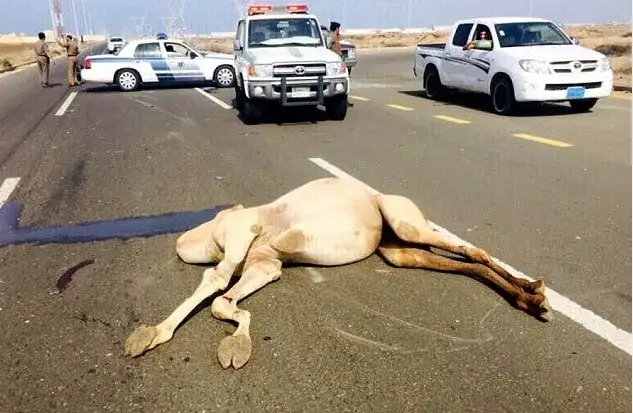
There are a number of reasons why there are so many accidents. In general, it is simply that male drivers fail to drive with care and with consideration for others.
The main causes of accidents are listed below.
- High-Speed Driving
- Distractions (mobiles phones)
- Unnecessary Risk-Taking
- Unsafe Vehicles
- Hitting camels or other obstacles
- Running traffic kights
The speed limit on Saudi highways is 120 kph and on main roads in towns and cities, it is 60-80 kph. Every highway has a minimum of three lanes. People drive on the right-hand side of the road. The first lane is the slowest. The second is for overtaking and the third for fast driving.
However, except for lorries and trucks, everyone uses the central lane as a slow lane and the first and third lanes for under and overtaking. As you travel, you will find most drivers sitting in the middle lane driving a steady 120 kph.
This is most likely because the many cars that join the highways on the slip roads/ ramps enter at high speed and take risks that often lead to accidents. It is just safer to sit in the middle lane and to avoid possible accidents in the slow lane, even though it is illegal.
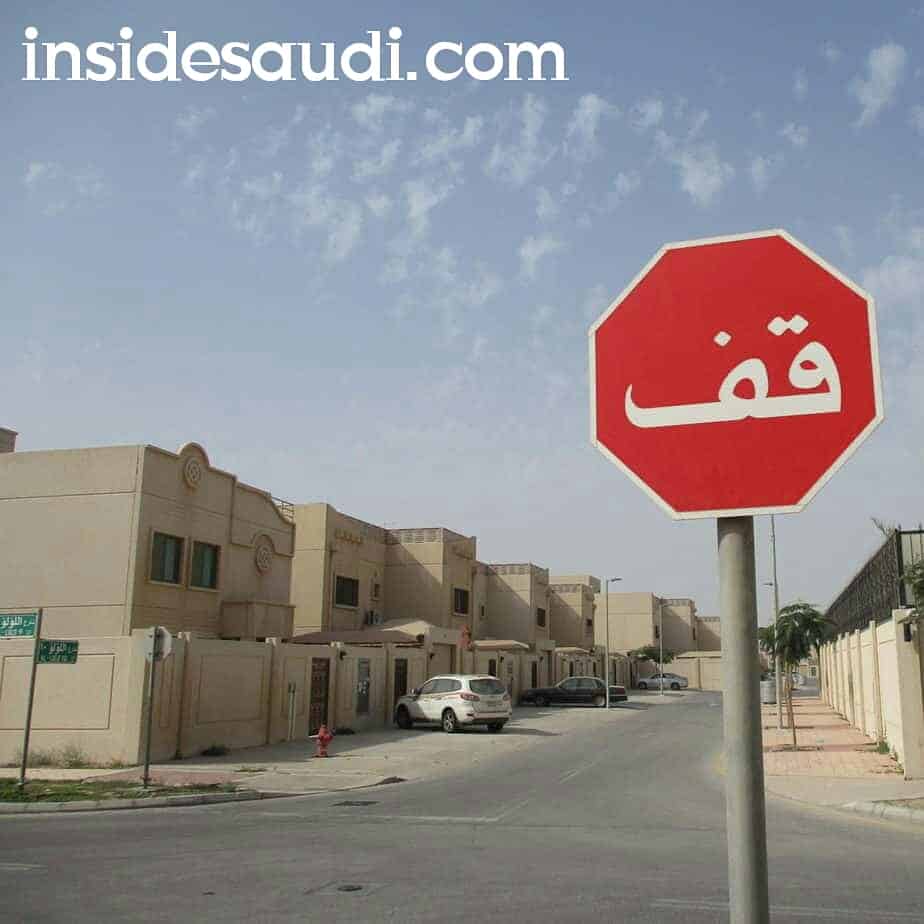
Safety Tips For Driving on Saudi Roads
Before You Drive
- Do not fill up your tank completely in hot weather
- Keep your tires and spare tire in good condition
- Check the water level in the radiator
- Carry a large container of water in the trunk
- Use a GPS device
- Always put on seat belts especially kids
When You Drive
- Keep your distance behind other vehicles
- Indicate before turning or changing lanes
- Drive cautiously but not much slower than other drivers
- Brake sensibly
- Avoid talking or texting on the phone
- Take plenty of breaks
- Drink loads of water
- Always, always always check your mirrors for high-speed drivers for the rear
Drifting
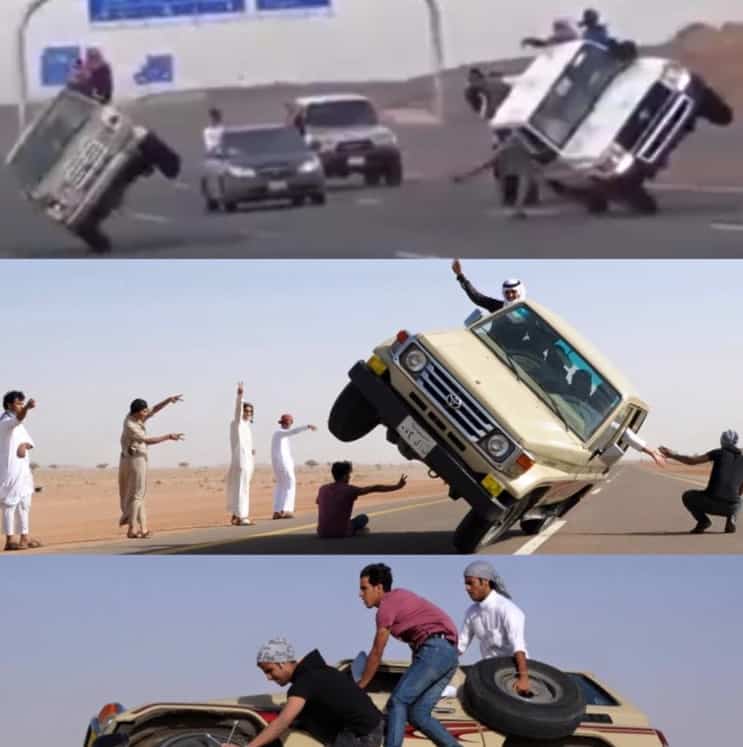
Today, I see less and less of drifting these days, but it was/is a common sight to see young drivers misusing quiet roads and districts to practice racing or drifting in their cars.
Drifting means when you drive at high speed and then suddenly turn the steering wheel to cause your car to spin horizontally over the surface of the road.
The problem happens when the weight and movement of the car cause it to tip vertically over the center of gravity of the moving car. (MFS)
The car topples uncontrollably causing it to crash into the spectator areas and flinging the drivers and passengers out of the vehicle windows to certain death and injury.
More public education, police controls, and cameras have decreased the number of cases of drifting mortalities, but it still goes on.
If you see youths driving recklessly as I have done, immediately pull over and stop. It is the safest thing you can do.
The Wonderful Vast Desert
The Saudi desert is big; 2,100 km long, 1,100 km wide and 2,200 million km2. Coming from cold northern Europe the vastness and color of the desert always cause me culture shock.
I am so impressed by the wide-open spaces, the shifting colors of the sands and just how difficult it is to travel across it.
Most visitors do not really know the desert because they like to stay in towns and cities taking the occasional excursions to desert camps etc without really exploring the desert.
Saudi Desert-Fun Facts
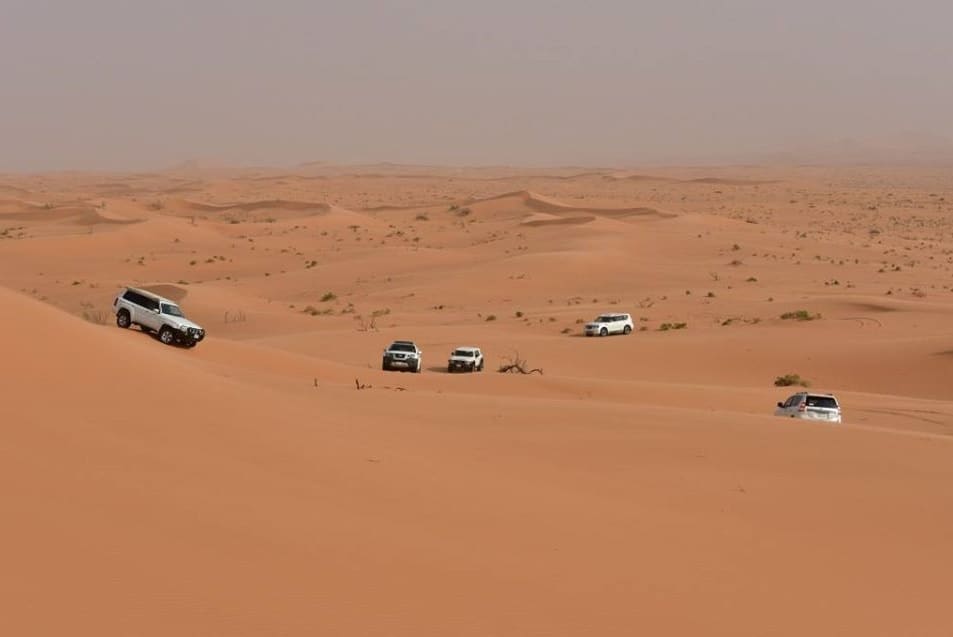
The Saudi Arabian desert is an immense landmass shaped like the letter I. The top, horizontal part of the I is the An Nafud Desert (65,000 km2 ) stretching across located the North of Saudi Arabia.
The long vertical center of the I is called the Ah Dahna Desert which is a long strip or corridor connecting the bottom part of the I in the south with the vast East-West lying Rub Al Khali Desert.
And it is hot and dry just like the Sahara Desert. It gets 3,600 hours duration of sunshine with average temperatures of 40-50°C in summer in low elevations and 20-30°C in the far south.
It also received 100mm per year of rain falling to 30-40mm in the driest (hyperarid) regions.
Appreciating Desert Camps
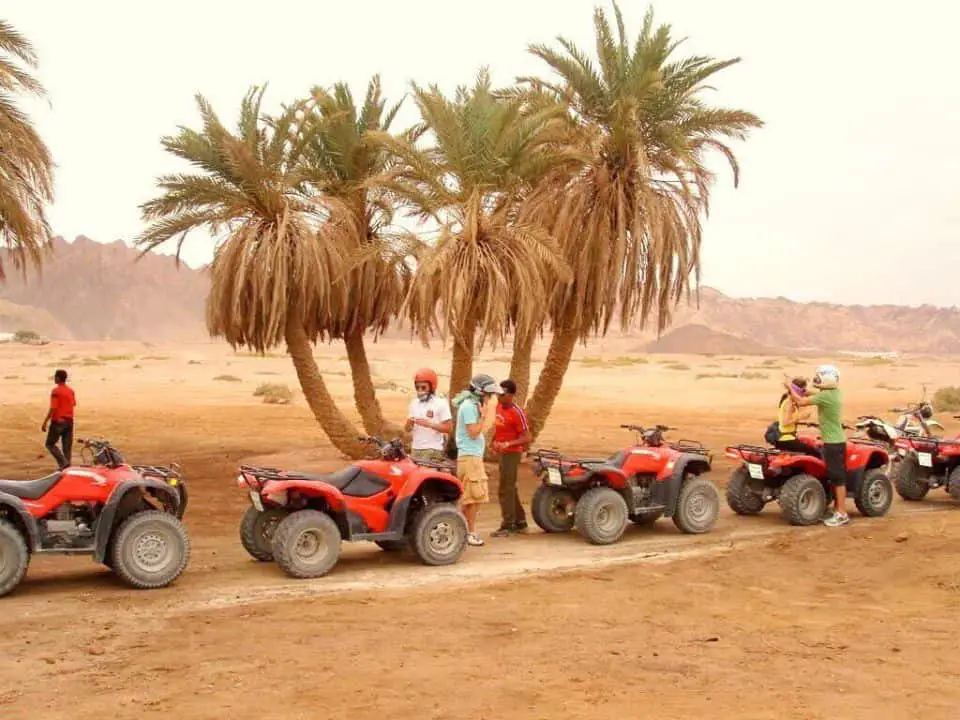
Visitors love going for days out to desert camps. No longer the permanent homes of the Bedouin, it is today a place for weekend rest and entertainment.
Desert camps are located in isolated sandy areas accessible from local towns and cities. They comprise a large area of land which are owned by tribal families. The usually enclosed the land with large fences and gates to stop hungry camels from entering and eating all the vegetation.
The large fenced enclosures contain cabins, tents, huts, camel and animal shelters. Here at the weekend in the cooler months (Nov-April) families meet to enjoy the cool, quiet vastness of the desert camps and the hospitable company.
Cooked food, coffee, tea, and soft drinks are always on the go. You can play sports, ride camels, have fun on the sand buggies up and down the sand dunes and go off-road in SUVs. (MFS)
Seeing Camels and Goats
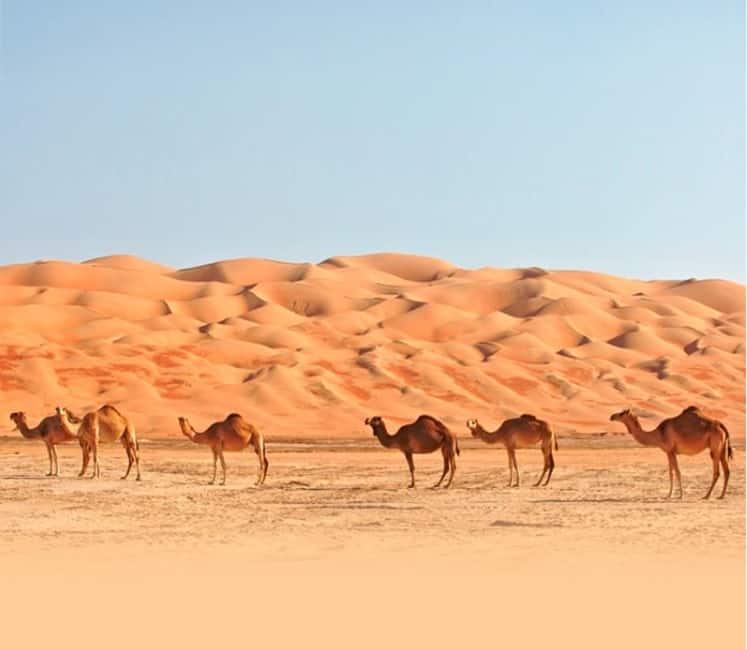
I love to see greet and pet the camels and have fun feeding the goats in many of the makeshift farms that exist. In the morning and afternoon, the winds are high blowing sand and dust in your face making it difficult to drive and see.
However by about 4 pm, the wind starts to settle a bit and you can then start to appreciate and enjoy the desert camp environment,
When you are at the camps, you will be offered camel milk. It is usually fresh and untreated, straight from the camel. Drink it at your own risk. The Saudi Bedouin will praise its benefits and encourage you to drink with him.
Remember though that his/her stomach got accustomed to drinking camel milk long ago. (MFS)
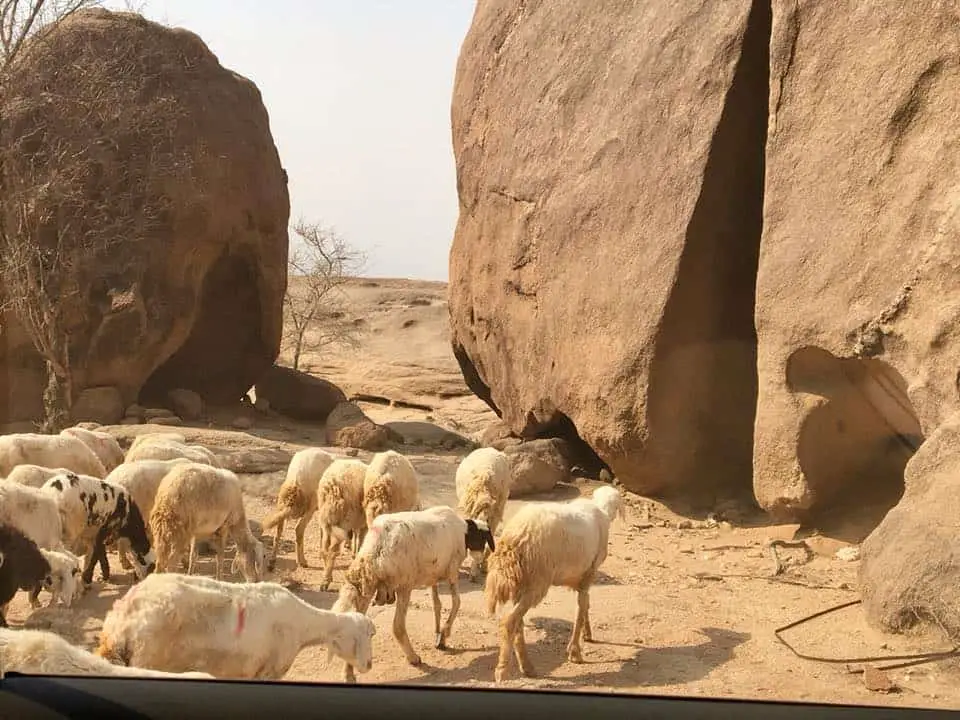
When you go out from the city to the desert, please remember to take lots of water to drink, a torch/flashlight, warm clothing for the evenings, blankets and cushions to sit on the floor. Relax, enjoy and appreciate the desert environment and just let yourself experience the wonderful surroundings.
Conclusion
In conclusion, these are the 10 main facts I wish I had known about before coming to Saudi Arabia. They are things that impress everyone who visits the kingdom and cause comments, debates, and at times quite a bit of discomfort.
The fastest and easiest way to deal with them is to accept that they are a part of life in Saudi Arabia and to spend your time looking for ways to enjoy this wonderful country before your time is up.
